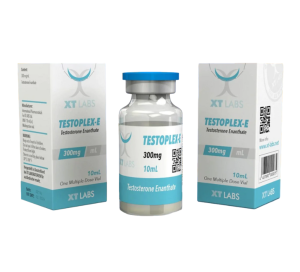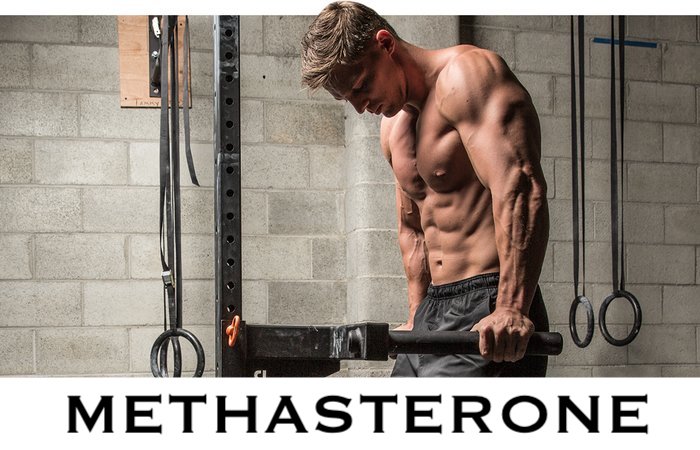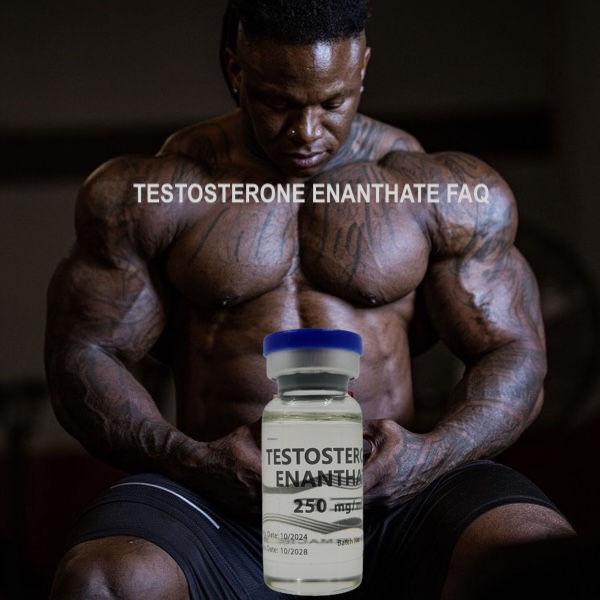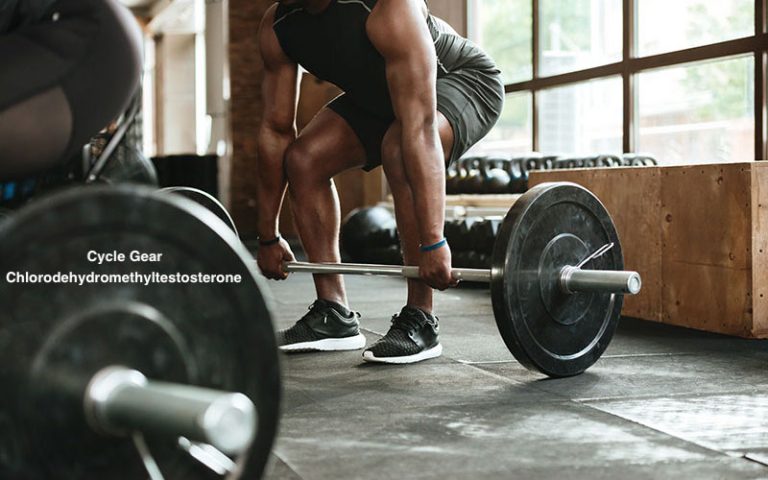Hypertrophy Training To Boost Your Gains
If you ever tried to grow muscle, there’s a chance that you’ve already heard the term hypertrophy before. Anyone who has been in the gym is likely to have heard about it, and it is also all over social media. Nonetheless, you may not fully understand what it actually means.
Hypertrophy is the physiology of gains. That’s why there’s such a high chance that you have heard it so many times before. It is the scientific term for “building muscle”. It describes the process of increasing the volume of an organ or tissue to the enlargement of the component cells. In our case, muscle hypertrophy describes the process of muscle tissue stimulation and repair. The principle is pretty simple – you lift progressively heavier weights to stimulate tissues, create a calorie surplus so they can grow, and get enough rest for them to have time to heal. This way your body will build larger muscles as a defense mechanism to cope with the ongoing increasing loads.
If that sounds like what you’d wish, then you should probably keep on reading, learning more about hypertrophy training which will supersize your muscle gains.
What is Hypertrophy?
In short, hypertrophy describes the growth of cells. Muscle hypertrophy describes the growth of muscle cells which will occur through exercise. When we’re hypertrophy training, we are actually creating tiny micro-tears in our muscles. But as we recover when resting and as we provide the necessary micro- and macro-nutrients to the muscles, those minor tears in our muscles are repaired, and they grow bigger and stronger to deal with the stress we’ve placed on them.
Our muscles are made up of fibers that have been bound together in groups of tissue. When the cells in those fibers are activated by trauma (such as when you exercise), your immune system is going to trigger a response that is going to start repairing that damage. At the same time, your body tends to release various hormones including testosterone and growth factors in order to repair that muscle. Testosterone will boost the creation of protein molecules which are going to repair your injured tissues. At the same time, the growth factors are going to “instruct” your cells to thicken the muscle fibers. This is the protein synthesis process, which you may have heard before. It is crucial for anyone who plans to build muscle. Through protein synthesis, you end up with larger and stronger muscles. This also explains why protein is such a vital element when hypertrophy training!
However, not all lifting results in hypertrophy. Well, if you’re trying to build strength, for example, then you are going to focus on low reps and heavy weights. If you are training for endurance, you will probably do low weights and high reps which enhances performance and endurance. However, for hypertrophy (muscle growth), the optimum is somewhere in the middle. Both in terms of weights and reps.

What is Hypertrophy Training?
So, as you can see, not all training (lifting) types result in hypertrophy. In fact, you’re still likely to notice some muscle growth with most lifting types. Nonetheless, if you really want to maximize muscle growth, you must focus specifically on hypertrophy training. This means you need to find the optimal amount of reps, with the optimal amount of weights (as said, it should be somewhere in the middle – not too heavy, not too light, not too many, and not too few reps), with proper exercises. Usually, you use a mix of compound and isolation exercises to make sure that you work multiple muscle groups and give specific muscle groups their time.
Your hypertrophy training focuses on compound exercises. They work multiple muscle groups all at once, allowing you to go with heavier weights, and they trigger a powerful hormonal response post-resistance training. While isolation exercises do have their place, providing a way to apply more targeted volume to a muscle, such as your biceps or triceps.
So, when you follow hypertrophy training, specifically to grow muscle, there are a few things you should take into consideration.
Factors to consider:
- Volume – research suggests that higher training volumes are necessary to maximize anabolism. Also, a multi-set approach favoring high resistance training volumes will optimize hypertrophy training.
- Frequency – the number of times that a muscle is worked per week does count. For example, split routines allow you to work out a muscle more often each week.
- Load – the intensity of the lift is widely considered the most essential factor in the hypertrophy response. One of the best approaches is to mix it up – both heavier and lighter loads.
- Rest – rest is another extremely important factor to consider. Experts suggest you need to rest at least two minutes between compound moves and about 60 to 90 seconds for isolation moves. Also, have at least one rest day in between training the same muscle group.
How do your genetics affect hypertrophy?
Fortunately for some and unfortunately for others, your genetics will affect hypertrophy way more than you might have thought about. So, if you’re a lucky one, then it is something you would love to hear, but if you’re not given this genetic trait, you wouldn’t really love to hear it. Nonetheless, the primary factor that determines how much muscle you can build is still down to your genetics. Even if you do not have the genetic trait to build muscle like Arnold Schwarzenegger, it still does not mean that you shouldn’t work out. On the other hand, even if you do have such genetics or even better, you still need to work out, or it just all goes to waste.
In both situations, you still need to train hard, eat well, get high quality and enough sleep, and manage stress to maximize your gains. Doing so will supersize your gains and make you grow muscle, regardless of your genetics. It is just the fact that people with better genetics for muscle building will notice faster results and likely get results that people with poor genetics will not be able to get.
Yet, even with good genetics, it still takes a long time to build significant muscle. Keep in mind that most of the physiques that we can see in bodybuilding stages take 10 to 20 years of hard training to get where they are. Keep in mind that muscle gain is a marathon, definitely not a sprint.
 Changing your genetics…
Changing your genetics…
Anyway, if you’re an unfortunate one (yeah, life’s not fair, that’s true) you could add quality anabolic steroids to both get you the gains that you couldn’t achieve naturally and significantly speed up your results. The Cycle Gear team is here to help you determine how to use them both efficiently and safely. Also, you can get the best quality compounds from our site for the best prices online!
If you’re among those lucky ones and using steroids, however, you could get unimaginable results, similar to those you can see when looking at bodybuilding legends. Yes, those legends were all using anabolic steroids.
The difference between working out for strength and hypertrophy
A lot of beginner gym-goers find it hard to understand the difference between training for strength and hypertrophy. In fact, many do not even realize that there’s a difference between the two. However, the more advanced lifter you become, the more specific you need to train for your goals.
For example, if you are training in the 6 to 12 rep range (it is one of the most common in gyms), then you’re probably building strength and muscle simultaneously. Nonetheless, long-time lifters who want to boost size and strength, should add some training days in the 2-5 rep range and lift at about 80% of their 1RM.
Hypertrophy training comes with a lot of benefits. It doesn’t only make you stronger and bigger (looking overall better), but it can improve the quality of life.
The hardest muscle to build?
The ability to grow muscle mass is primarily down to your genetics, as said. However, some specific muscles are growing based on genetics even more. Calves, forearms, triceps, and obliques are among them, and they are also popular for being tricky to grow. This explains why some people never worked out and still may have bigger calves than those who have been training for years now. There are some guys who simply have an easier time developing specific muscles than others.
By the way, this is where anabolic steroids could be immensely helpful.
How to Maximize Hypertrophy Gains?
Effective hypertrophy basically means finding the perfect balance between training, nutrition, and recovery. While we’re all humans and it is hard to find a perfect balance, we should at least strive towards it. You are shifting damages to your muscle fibers, forcing your body to repair them thicker. So, in order to make this formula work, you are going to need extra calories. Then, the rest is the final piece of the puzzle because the body is going to require time to repair the damage that you’ve created when exercising.
The rest such as supplements and whatever else are just helping. But there’s nothing better than anabolic steroids to help boost the efficacy of your perfect balance between exercising, dieting, and sleeping.

How to train?
In order to train for hypertrophy, you should keep on challenging your muscles with progressive overload. Each new training session should increase the strain placed on the muscle from the previous one. It could be reducing the rest time, increasing the reps, or adding weight. For example, if you squatted 200 lbs for ten reps last week, this week aim to do 11 reps, or squad 220 lbs for the same ten reps. This will add a more significant stimulus.
Moreover, structure your training to target each muscle group twice a week, with at least 1-2 rest days in between. Aim for 3-5 sets, with 6-12 reps for most exercises, with a few exceptions. Rest between 30 to 120 seconds. One last but perhaps most important thing to mention – proper form. Proper form is everything. It would be much better to complete 5 reps with perfect form rather than 10 reps (with the same weight) swinging the weight around. You need to stress your muscles, not your joints and ligaments. You need to go for the correct weight so it wouldn’t be too light, but not too heavy, so you could complete 6-12 reps with perfect form, making it challenging, but not impossible, nor too easy.
What to eat?
It is extremely important to remember that correct training is just half of what you should pay attention to when it comes to hypertrophy. Your diet plays an extremely important role as well. Your body will need fuel to perform the exercises and recover after performing them. So, your body needs plenty of it. According to research, the “price” of building muscle is about 400 to 500 extra calories a day, from high quality food. It is not just eating in surplus, you need to eat correctly too. Focus on a balanced, varied, and healthy diet where your body gets a proper amount of macro and micronutrients. Alcohol, high fat, high sugar, and highly processed foods all add up to the number of calories, but they don’t provide what your body needs to fuel those exercises and recover muscles.
You must make sure that your body is also getting enough water. Lots of people underestimate the importance of staying hydrated. Aim to drink 30 ml of water for every kilogram of body weight per day.
Resting and recovery
Why can’t we just lift weights 24/7 for a month and become the next Mr. Olympia? Because your muscles need time to heal and grow. The real “magic” where muscles actually grow occurs when you rest and sleep. Therefore, as much as you can understand, rest is vital for hypertrophy. Even if you have the best hypertrophy training plan, your muscles will still not grow if you’re not recovering. Pay attention both to the quantity and quality of sleep. Aim to sleep at least 8 hours per night to give the muscles the time they need to grow. Some may need even more than 8 hours. Moreover, the quality of sleep matters too. Try to go to bed and wake up at around the same time, while going to sleep no later than 11 PM. Sleep in a dark, cool, quiet, and ventilated place for maximum sleep quality.
Moreover, it is not only sleeping. Keep in mind that what you’re doing throughout the day is very important too. For example, studies suggest that depression, anxiety, and stress – they all can literally stop muscle growth. Try to manage them all. Remember that you’re in the gym for a fraction of the day. What you’re doing the rest of the day is going to make a huge difference.
The Ultimate Full Body Hypertrophy Workout
If you can’t wait to make those gains, you should plan out your diet and your workout schedule. Now I am going to share an example of a hypertrophy workout that will provide your entire body’s muscles the stimulus they need to grow.
After you’ve warmed up (either on a treadmill, skipping rope, or abs exercises), follow the below exercises in order. It is extremely important to remember that you should focus on proper form. Also, go for a weight that will make this challenging. If it’s too easy, the weight you picked is too light. Yet, it shouldn’t leave you completely exhausted either. Training to failure is a great way to build muscle, but do it only when you have enough lifting experience. Note the sets, reps, and rest for each move. So, you should remember:
- Types of exercise
- Sets
- Reps
- Rest
- Weight
- All performed in perfect form
As said, follow the below exercises in order. However, keep in mind that this is just an example of a hypertrophy training plan. There are LOTS of other exercises and training plans you need to implement into your workouts.
Hypertrophy Workout Example
- Back Squat – 4 sets, 6 reps, 90 seconds rest in between sets
- Barbell Romanian Deadlift – 3 sets, 8 reps, 90 seconds rest in between sets
- Flat Dumbbell Bench Press – 4 sets, 6 reps, 90 seconds rest in between sets
- Neutral Grip Pull-up – 3 sets, as many reps as possible (AMRAP), 90 seconds rest in between sets
- Bulgarian Split Squat – 3 sets, 10 reps, 60 seconds rest in between sets
- Dumbbell Lateral Raise – 3 sets, 12-15 reps, 60 seconds rest in between sets
- Chest Supported Dumbbell Row – 3 sets, 15 reps, 60 seconds rest in between sets
- Lying EZ Bar Skullcrusher – 3 sets, 10-12 reps, 60 seconds rest in between sets
- Incline Dumbbell Curl – 3 sets, 10-12 reps, 60 seconds rest in between sets
- Seated Calf Raise – 3 sets, 15-20 reps, 45 seconds rest in between sets
- Hanging Leg Raise – 3 sets, 10-15 reps, 45 seconds rest in between sets
Looking to Maximize Results From Hypertrophy Training?

If you really want to make gains by following a hypertrophy training routine and enhancing your performance in the gym, I strongly suggest taking our advice.
It is important to understand that muscle growth doesn’t occur overnight and it involves a lot of patience, hard work, and dedication. However, you can get faster results and bigger results with the help of Cycle Gear! Our 100% real and high quality bulking compounds are going to help you achieve mind-blowing results! At Cycle-Gear.to you can find a very wide availability of products that were proven the best when it comes to bulking or cutting needs. We can also help with an individual cycle advice plan so you can get the best effects from your diet, workout, and rest while making sure you stay away from the side effects.








